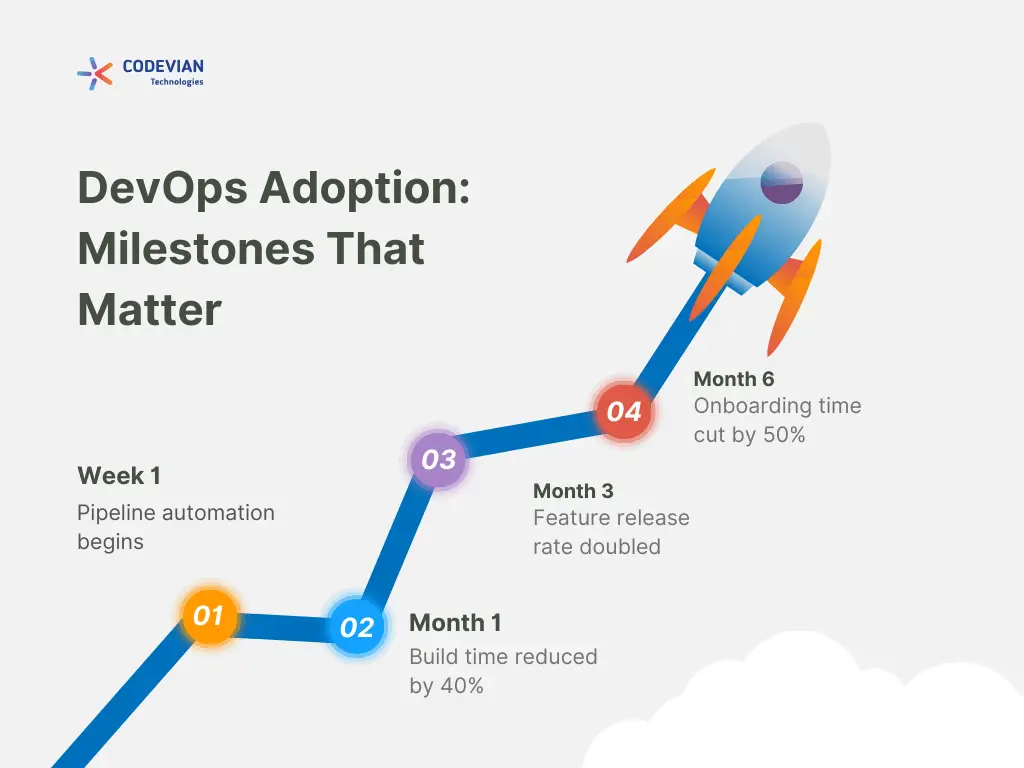As a CFO, I’ve always been told to “Pay attention to how much money the company makes in the end.” It’s true, but I’ve realised much more while examining DevOps. I always think about cloud bills, software subscriptions, and infrastructure costs. But over time, I’ve come to realise that the real costs of not investing in DevOps aren’t always visible on a balance sheet. They’re hidden in your workflows, developer morale, and missed opportunities.
This may sound false, but I’m going to put it out this way. I will walk you through what I’ve learned, not as a tech lead, but from the financial seat — this is the place where every hour, every delay, and every inefficiency eventually turns into a dollar sign.
Idle Developers = Burnt Budget
When working on a project, here’s what I found while reviewing our operating expenses:
If a developer costs us roughly $100 per hour and spends 2 hours each day waiting for builds to finish or chasing approvals, that’s $200 lost per day, per developer. Multiply that by a 10-person team, 21 workdays in a month, and you’re staring at $42,000 a month in lost productivity.
Now, imagine if we had a proper DevOps setup. Adding two more build servers might cost around $3,000 a month — a simple and smart decision.
I think the real problem is that when we try too hard to cut costs, we often miss the hidden expenses and skip investing in devops that could actually save us more money over time.
Waiting = Loss
The truth is that Idle time doesn’t just drain money — it drains people. Developers hate waiting. When your most talented engineers spend hours chasing the team or waiting for pipelines to complete, they don’t feel valued and lose momentum.
And that’s when they start leaving.
You might think losing a developer is normal, but replacing a good engineer takes a lot of time and money. Hiring a new developer isn’t cheap. When someone leaves, you spend a lot on finding a replacement, training them, and dealing with slower work. This can easily cost $20,000 to $40,000 — plus, it lowers team morale.
If you investing in DevOps in place and follow practices like smooth pipelines, quick deployments, and stable test environments, your developers can work faster and with less stress. This makes them happier — and more likely to stay.
Over-automation Can Also Hurt
There’s a flip side to automation that I’ve seen.
Some teams can go all in on automation without thinking it through. They’ll spend a full week automating a one-off task that takes 15 minutes to do manually.
Automation is great when you’re doing something repeatedly and manually. But if you try to automate everything without thinking about how often it’s needed or how useful it really is, you end up wasting time — and in business, time always means money.
Every decision should include a simple value check: How much will it cost to build and maintain? How often will we use it? When will it start saving us money?
Without asking these questions, automation can just become an expensive time-waster.
Unlock the power of AI/ML for your business
We can help! Whether you need custom AI software or want to augment your team with skilled developers for a particular project — we have all AI ML solutions for your needs.
The Dangerous Debt We Don’t Count
I used to think that the term technical debt was just a “developer thing.” But now I see it as a financial liability.
When we ignore tech debt, product updates slow down, bugs increase, customer experience suffers, and releases become riskier. Every delay in development slows down how we make money. A task that should take one sprint now takes two, holding back progress and revenue.
In 2020, I noticed that things were slowing down. Because of too much tech debt, our team’s speed dropped by 30%. Features took longer, deadlines were missed, and people got frustrated. We decided to investing in DevOps — and it worked. With better CI/CD pipelines, automated testing, and cleaner environments, we reduced technical debt and started moving faster again.
What it Could Have Been…
Most of the time, we calculate cost in terms of “what we spent.” But there’s another side — what we missed, or let’s say it’s “the opportunity cost”
Let’s look at that example again: if each developer wastes 2 hours a day, it adds up to $42,000 lost every month.
Now imagine if that time was used to build a new feature or test a business idea. That’s not just wasted time — it’s a missed chance to grow. You need to calculate opportunity cost as well, so your business does not lose out on real opportunities.
Milestone Deadlines and Investor Expectations
As a CFO, I work closely with investors and the board. Our funding rounds depend on reaching milestones like releasing a new product, gaining users, or adding features. If we miss these deadlines, it doesn’t just delay the product—it also delays funding. I’ve seen startups run out of money because they didn’t hit the milestone needed to get the next investment.
Solution?
A well-functioning DevOps team can buy you time. If you can save just one hour a day per developer by improving your tools or automating repetitive tasks. This can add up to weeks of extra productive time each quarter. It could even be the key to hitting your next milestone on time.

When I first heard about DevOps, I thought it was about using tools like Kubernetes, CI/CD, and Terraform scripts. But what I’ve learned is that DevOps is really about velocity, stability, and predictability — the core ingredients of a successful business.
Whether it’s:
- Reducing deployment failures
- Increasing release frequency
- Improving rollback mechanisms
- Shortening onboarding for new developers
With DevOps, everything runs more smoothly, leading to better financial results.
Final Note
If you want to convince your finance team (like me) to investing in DevOps is worth investing in, please come with metrics.
This can include:
- How much time is spent on builds and deployments?
- What’s the failure rate of releases?
- How many hours does it take to onboard a new developer? How much does it cost?
- What’s the average lead time from commit to production?
Numbers tell a story. To get support for your DevOps projects, start tracking these metrics. They’ll help you show the value of upgrades, automation, or new tools.






